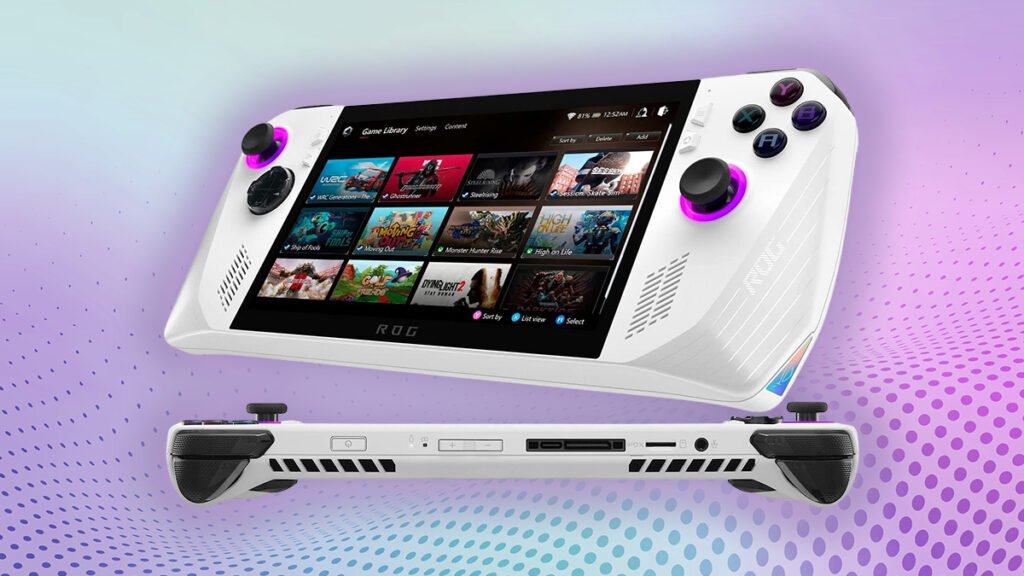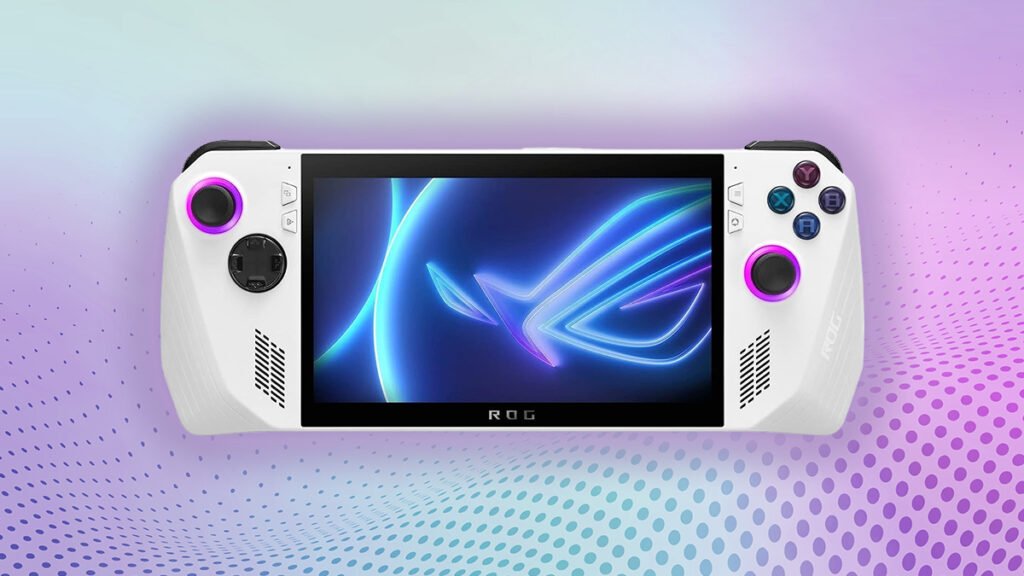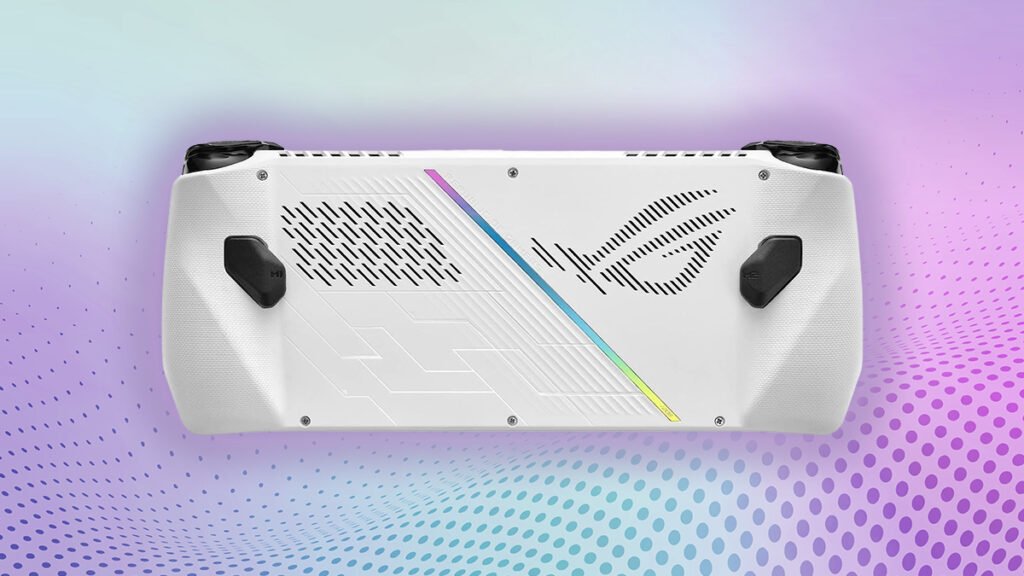When the Steam Deck was released, it met with critical acclaim and praise, earning it a ton of positive publicity. With lofty aims of bringing PC-level gaming to a handheld device, the Steam Deck’s combination of decent hardware in a small, portable package was a winner with the public. Naturally, many companies would see this success and see an opportunity, which is exactly the story with the Asus ROG Ally Z1.
Asus, striking while the iron is hot, announced the Asus ROG Ally Z1 in 2023 to a mixed reception. A challenger to the Steam Deck was inevitable, and Asus seemed to be pulling out all the stops with the Ally. Combine this with the fact that the Steam Deck is still relatively difficult to purchase for many, and the Ally suddenly becomes a much more interesting proposition.
What worried many was whether the Ally was rushed to the market so that Asus could get a slice of the pie early. After all, rumors of portable gaming PCs have been abounded for a while now from all sorts of manufacturers. So, did Asus rush a product out to get market share quickly, or is the ROG Ally Z1 a genuinely solid piece of gaming hardware? That’s what we seek to answer in this full review!
|
|
Asus ROG Ally Z1 Review: Specifications
A quick specification rundown of the Asus ROG Ally Z1 shows off a fairly impressive package for such a small device. The standard Ally comes with an AMD Ryzen Z1 CPU, though if you’re looking for better performance, you may opt for the variant running the Ryzen Z1 Extreme CPU. Outside of that, we’ve got surprisingly good specs on paper, even if we’d appreciate a bit more in the way of I/O.
- CPU: AMD Ryzen Z1 CPU Zen 4 architecture, 6-core /12-threads, up to 4.90 GHz boost
- GPU: 4 RDNA3 CUs, up to 2.5 GHz, up to 2.8 Teraflops
- TDP: 9-30W
- Display: 7-inch FHD (1920 x 1080) 16:9 IPS-level touchscreen, 500nits, 100% of sRGB, 120Hz, 7ms response time
- RAM: 16GB LPDDR5 on board (6400MT/s dual channel)
- Storage: 512GB PCIe 4.0 NVMe M.2 SSD
- I/O Ports: 3.5mm Combo Audio Jack, ROG XG Mobile Interface, and USB Type-C combo port
- Network and Communication: Triple band Wi-Fi 6E (802.11ax) 2 x 2 Bluetooth 5.2
- Battery: 40WHrs
- Power Supply: 65W USB Type-C PD 3.0 power supply Adapter: 65W AC Adapter, Output: 20V DC, 3.25A, 65W, Input: 100~240V AC 50/60Hz universal
- Weight: 608g
- Dimensions: 28.0 x 11.1 x 2.12 ~3.24cm
- Operating system: Windows 11 Home
Asus ROG Ally Z1 Review: Design and Build
Design

The design of the Asus ROG Ally Z1 is reminiscent of the Steam Deck but with a ton of Asus flair in the mix. It’s all evident in the form factor of the handheld, with the display splitting the controls on either side of the device. It’s surprisingly simple for an ROG product, the main chassis comprising of two slabs of textured plastic. The grips are also easy to identify, thanks to a more coarse, grippy texture.
Looking at the front of the device, we have the face buttons, D-pad, and joystick, along with some smaller control buttons. We’re not entirely huge fans of the glossy finish on the buttons and D-pad. They tend to become grimy after some use, and we’re curious why Asus chose these for the Ally. Thankfully, the buttons feel tactile and clicky, ala an Xbox Series X controller.
The D-pad and joysticks also harken towards that general Xbox Series X design philosophy. This comes down to specific design choices, like the textures around the concave joysticks to the way the D-pad is a single piece of plastic instead of separate buttons. Whether you like how these controls feel comes down to whether you like the Xbox Series X style of controller.
On the top, we find the shoulder and trigger buttons, which are lovely and large. The shoulder buttons press down with a satisfying click, and the triggers have a satisfying amount of travel. You can find two more buttons on the back of the device, these are customizable. The other UI and control buttons are clicky and solid, and generally, we’re quite pleased with how the controls feel on the Ally.
Other Design Elements
Moving on to other design elements, on the top of the device we find the power button, volume rocker, charging port, an eGPU port, a microSD card slot, and a headphone jack. We don’t have any problem with these, outside of the power button being a bit too flush with the case. It can be a bit difficult to press it down as a result, but it’s a minor issue.
The final thing we’d like to touch upon in this section is the size of the Asus ROG Ally. We’ve always been aware that it’s a fair bit smaller than the Steam Deck, but even then, it’s a surprisingly lightweight device. At 608g, the device is easy to handle and not too fatiguing to use for long gaming sessions. The Ally is a robust little handheld despite its weight, which was pleasant to experience.
Asus ROG Ally Z1 Review: Display

The Ally features a 7-inch, Full HD 120Hz IPS LCD on the front, and it’s a quality panel. A lot of features tied to the panel are great for gaming, including its 48-120Hz variable refresh rate with low frame rate compensation. It’s also fairly bright and vibrant, peaking at 500 nits brightness and with gorilla victus protection and full sRGB support. Naturally for an IPS display, viewing angles are also excellent.
When it comes to its responsiveness as a touch screen, there’s still nothing to complain about as it performs great. With a 7ms response time, it’s not necessarily the fastest responding display on the market, though it’s more than fast enough for basically any practical application, which includes making split-second decisions in video games. Not much else to say about the Ally’s display, it’s a solid panel with no real cons.
Asus ROG Ally Z1 Review: Performance

This is the most important part of the review for most of you reading, we’re sure. After all, what’s the point of a gaming handheld if it can’t, run games satisfactorily? Thankfully, the Asus ROG Ally sports reasonably good performance with a fair few caveats. It’s important to keep in mind that the Ally, for all its strengths, is still a portable PC the size of a tablet, so it’s naturally not going to be a performance monster.
You get a choice between an AMD Ryzen Z1 APU or a Z1 Extreme APU with a Zen 4 processor. The Z1 Extreme APU is a much faster performer than the standard Z1, so the Z1 Extreme is the better choice if you want the best performance. The bigger issue boils down to the RDNA 3 GPU in Ryzen Z1 APU, which only features four AMD RDNA 3 CUs. It helps keep temperatures low, though it also means the Ally can struggle to run games at full speed when you pump the graphics up.
Gaming Performance
Testing games like Forza Horizon and Cyberpunk 2077, pumping the graphics up to the highest at 1080p immediately bumps performance down. We’re talking anywhere between 10 to 20 frames at any given time, which isn’t great. Of course, this isn’t the point of the Asus ROG Ally Z1. It’s a small device with a small display after all, which is where we get into the strengths of the device.
Both of these games can be pumped down graphically to better suit Ally’s specifications. Bringing down the resolution to 720p and bringing the graphics down to low allows the device to hit a consistent 30fps, which isn’t ideal, but definitely playable. Where the Ally shines is playing less intensive games, like the many indie games on the market.
For example, a game like Tekken 7 on medium graphics and 720p runs at a solid 60fps, which is essential for a fighting game. Games like Shovel Knight and Celeste meanwhile run flawlessly, without any tweaking necessary. The general rule of thumb is that most games will run, though they might need some adjustments to their graphics and resolution. With such a small display, the lower resolution matters much less than you’d expect, so it works.
You also need to keep in mind that the Ally has different modes that will limit the games you can play and the battery life you get. We have a 10W Silent mode, a 15W Performance mode, and a 25W Turbo mode. When plugged in, Turbo mode boosts itself to 30W, giving it a bit of an extra push. Running the device in Turbo mode runs the battery out in an hour, however, so be reasonable.
Asus ROG Ally Z1 Review: Verdict
Overall, we have to say, the Asus ROG Ally Z1 does outdo a lot of the expectations we set for it. It’s a great handheld for lighter gaming, though you’ll need to do some tweaking if you want to get the most out of it. It’s not about to replace your gaming desktop, but it’s far from the Steam Deck cash grab many thought it would be. Good stuff from Asus, and we’re eager to see the next iteration of this device further down the line.
Asus ROG Ally Z1 Review: FAQs
Now that we’ve reached the end of the review, let’s take a closer look at some of the frequently asked questions surrounding the Asus ROG Ally Z1 handheld.
We’re happy to say that the Asus ROG Ally is plenty good, depending on what you’re looking for. If what you want is a gaming device that will play all games at the highest setting, it won’t deliver. If you don’t mind bumping down the graphics or just want to play a lot of indie games on the go, then it works phenomenally well.
Asus’ ROG Ally Z1 is a pretty one-of-a-kind gaming handheld, even with the Steam Deck available. Many of its features are unique, and its controls are different, so if it fits your preferences, it’s more than worth it.
Right now, the Asus ROG Ally Z1 costs INR59,990 in India right now, a pretty solid price for the handheld.
Now, while you can use raytracing on the ROG Ally, it really can’t handle it. On games that support it, you’re practically dooming your gameplay to be stuck chugging along at 6-8fps.




Comments
Loading…